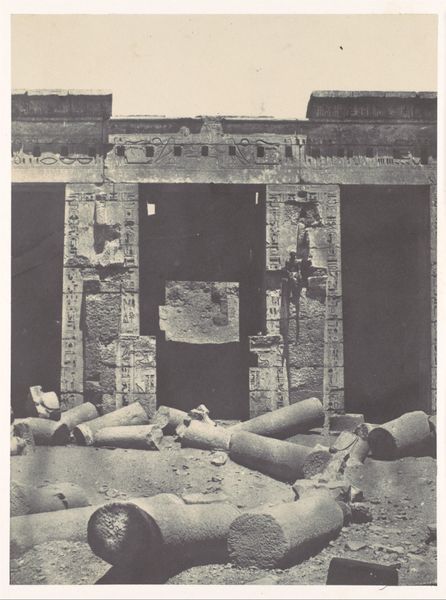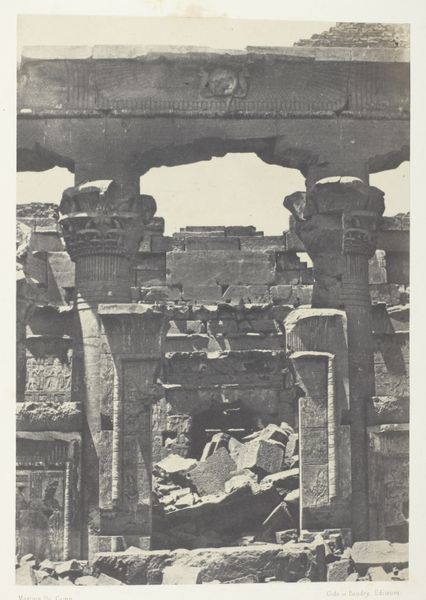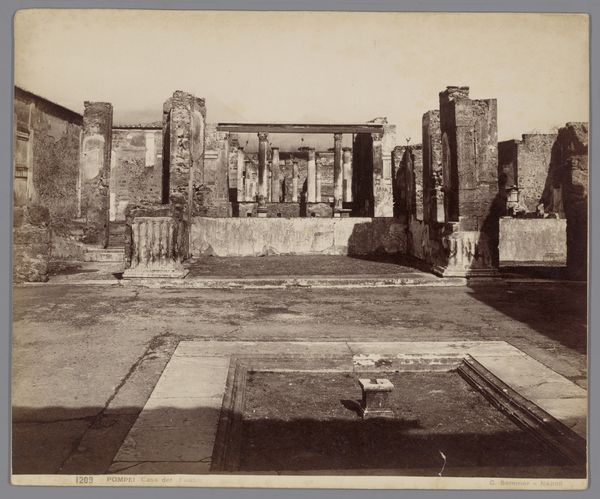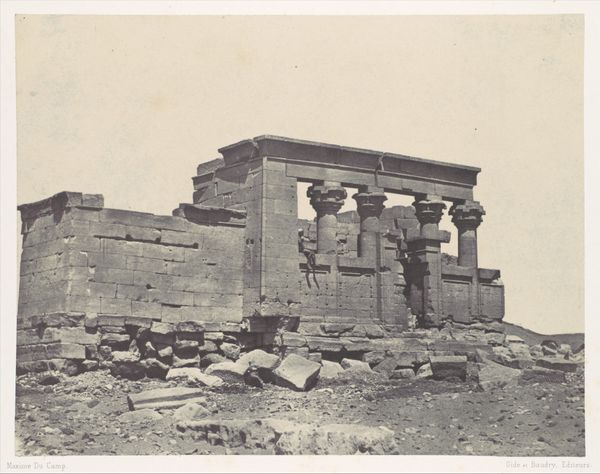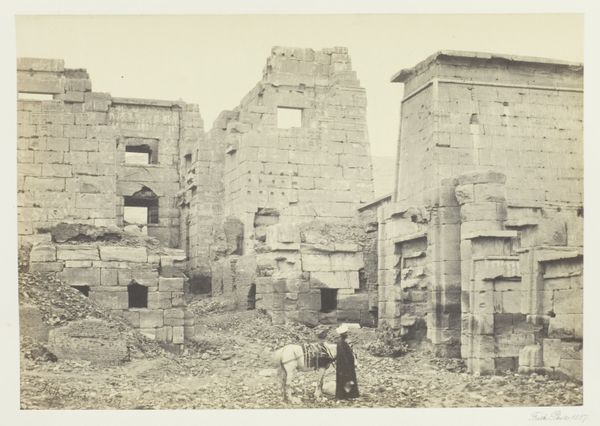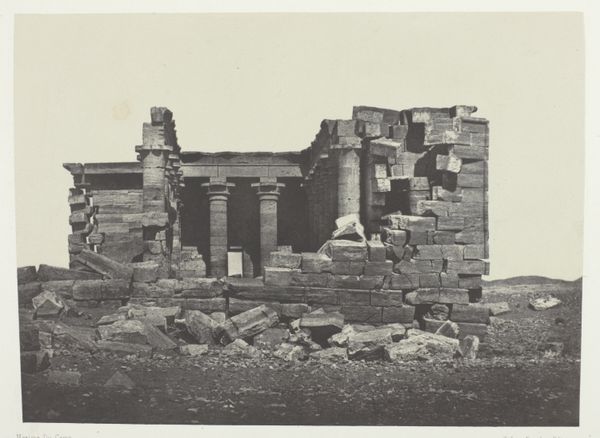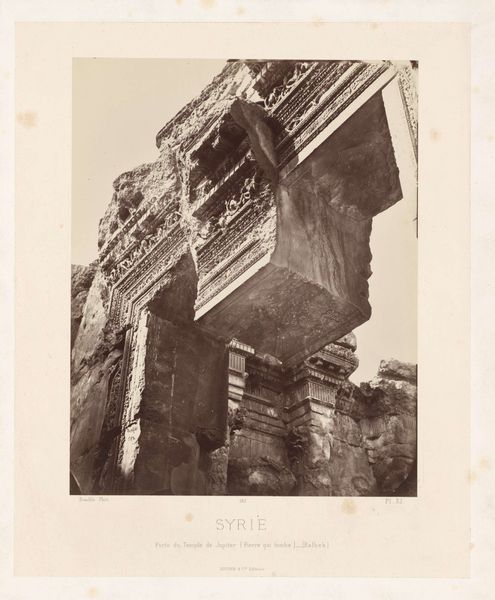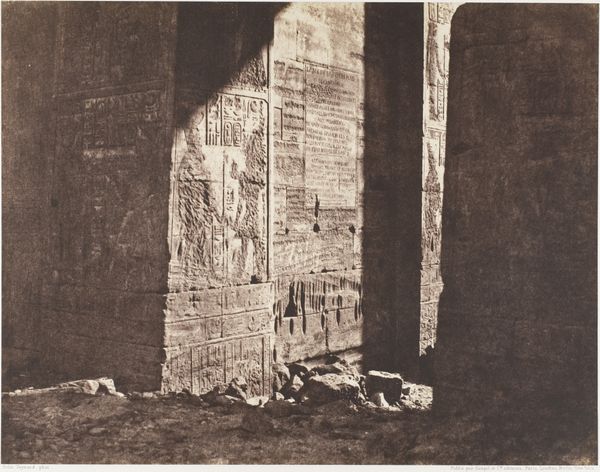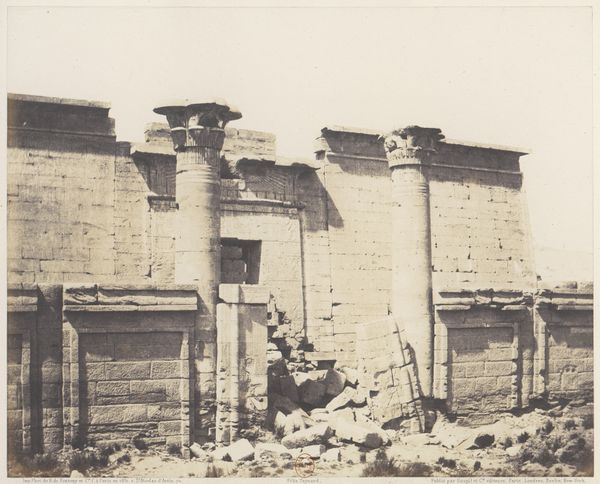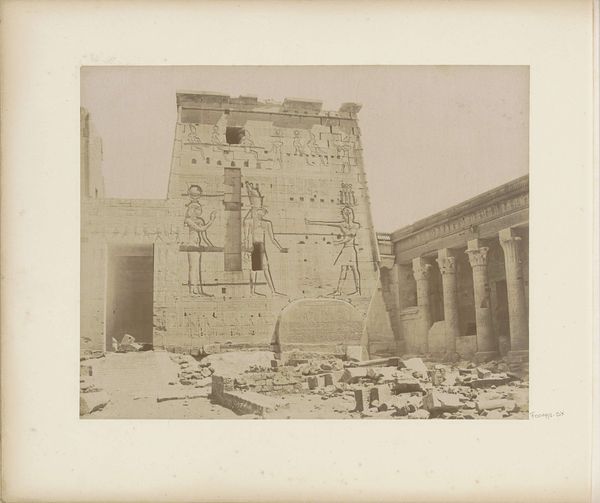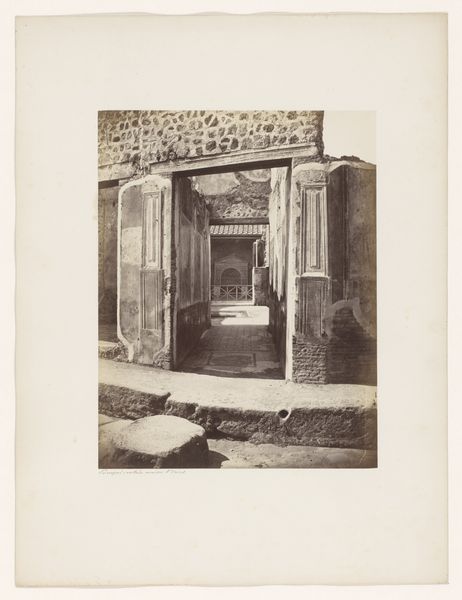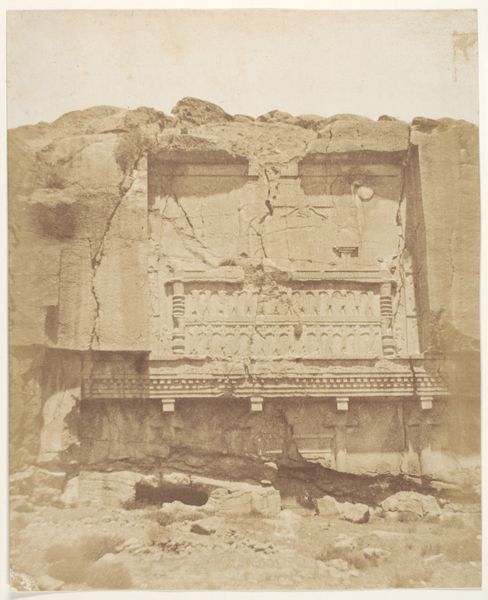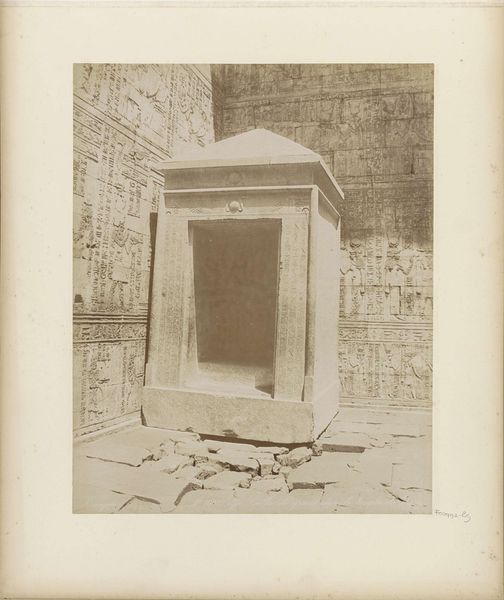
Médinet-Habou, Propylées du Thoutmoseum; Thèbes Possibly 1849 - 1852
0:00
0:00
print, paper, photography
#
16_19th-century
# print
#
landscape
#
ancient-egyptian-art
#
paper
#
photography
#
egypt
#
ancient-mediterranean
Dimensions: 21.5 × 16.2 cm (image/paper); 43.1 × 30 cm (album page)
Copyright: Public Domain
This is "Médinet-Habou, Propylées du Thoutmoseum; Thèbes," a photograph taken by Maxime Du Camp in the mid-19th century. Du Camp was part of a wave of European artists and intellectuals who traveled to Egypt, driven by the era’s fascination with antiquity and the exotic "Orient." This image captures the ruins of a temple in Thebes, inviting viewers to contemplate the passage of time and the decline of civilizations. It reflects the power dynamics inherent in the colonial gaze. As a Western photographer, Du Camp was capturing and framing Egyptian history for a European audience. The photograph presents the temple as a relic of the past, devoid of its original cultural context. What stories would this place tell if it could speak? How does viewing it through Du Camp’s lens affect our understanding of its history and significance? It prompts us to reflect on whose stories are told and how these stories shape our perceptions of different cultures and histories.
Comments
No comments
Be the first to comment and join the conversation on the ultimate creative platform.

